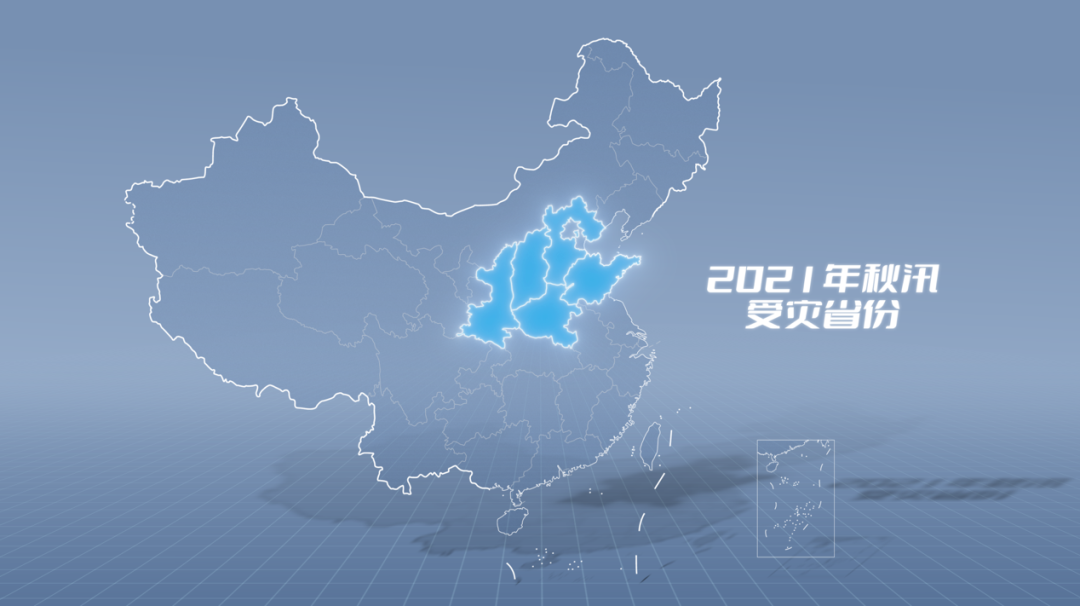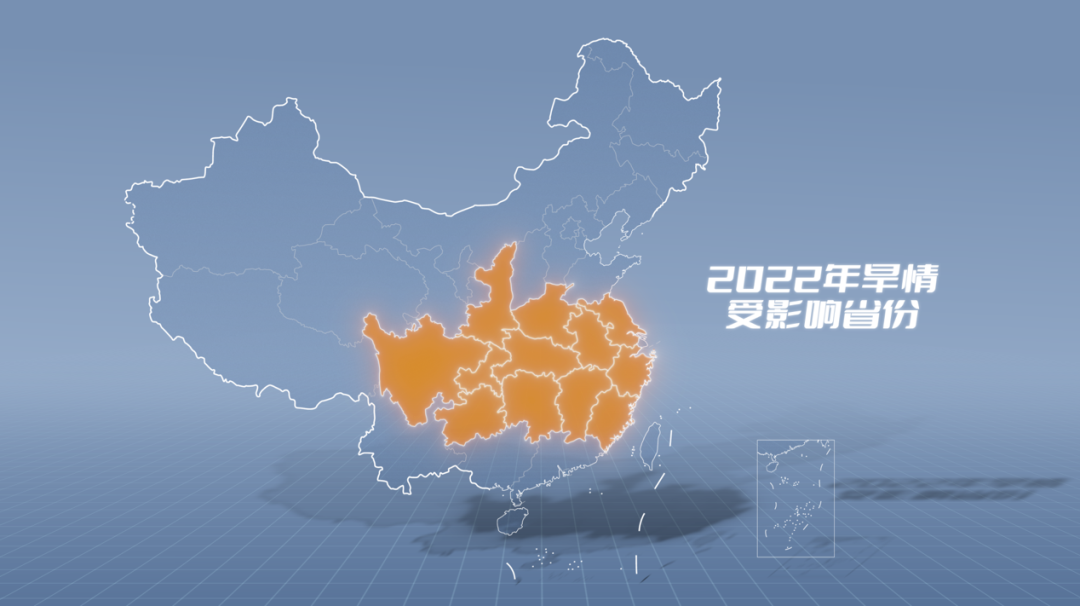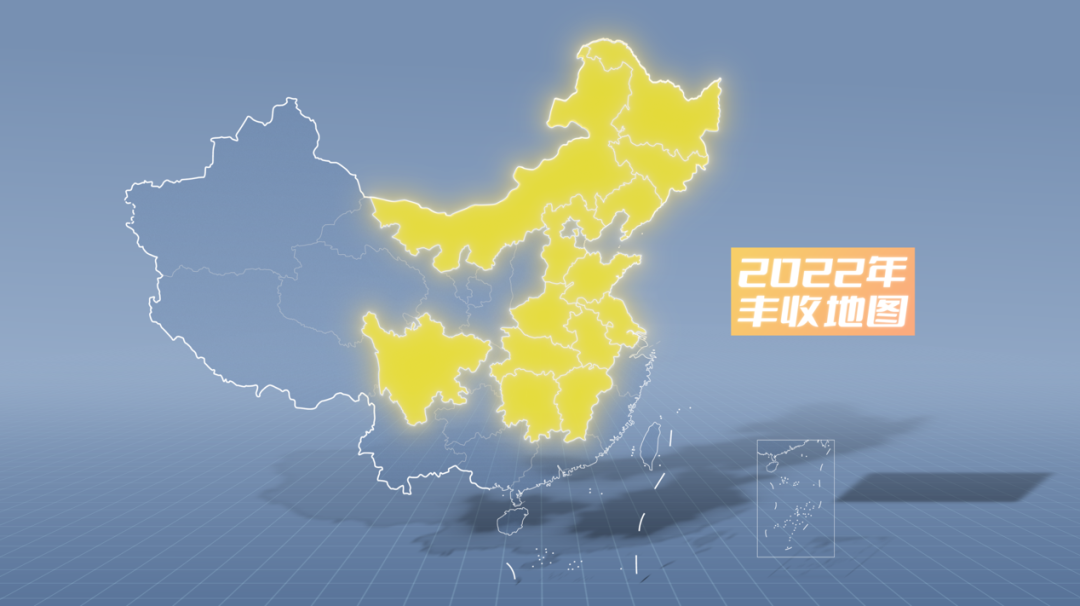
Behind the bumper harvest is the strength of a big country, 1373.1 billion kg! Tell you these things behind the harvest
Release time:
2022-12-14 09:53
Source:
China-ASEAN Agricultural Material Chamber of Commerce
Behind the bumper harvest is the strength of a big country, 1373.1 billion kg! Tell you these things behind the harvest
As the saying goes, the granary is solid, the world is safe. Whether food can be harvested or not is related to the country's food security, and it is also closely related to the rice bowl of each of us. However, since the beginning of this year, the international environment has become more complex and severe. The domestic epidemic has spread more frequently. Coupled with weather factors, whether the annual grain harvest can be harvested has once made many people question marks.
Just now, the National Bureau of Statistics handed in the overall answer sheet of grain production for the whole year.
Hand in papers: 1373.1 billion kg!
China's grain production hit a new record high
This year, the national grain production has handed over such an answer: the total grain output of the whole country reached 1373.1 billion jin, an increase of 7.4 billion jin or 0.5 percent over the previous year, and remained above 1.3 trillion jin for eight consecutive years. Among them, the grain output was 1266.5 billion kg, an increase of 1 billion kg over the previous year.
In addition, the national grain sown area was 1774.98 million mu, an increase of 0.6 percent over the previous year, and the grain output per unit area was 387kg/mu.
Three pictures perceive the hard-won harvest
Harvest is actually not easy to come.

The disaster map of last year's autumn flood shows that the main wheat producing areas have been affected. As a result, 1/3 winter wheat is sown late in a large area, and as many as 0.11 billion mu of late-sown wheat makes the summer grain harvest face severe challenges.

On this year's high temperature and drought distribution map, the main autumn grain producing areas in the Yangtze River Basin have also been seriously affected by drought. Since it was a critical period for the growth of rice booting in southern my country, the harvest of autumn grain this year was also a bit more worrying.
From north to south, the main producing areas of summer and autumn grain have been affected by natural disasters to varying degrees.

However, by the end of the year, we found that on this bumper harvest map, the areas affected by weather disasters not only did not reduce production, but also achieved a bumper harvest.
What's going on here?
What does a good harvest depend on under heavy pressure?
No pains, no gains. A bumper harvest of grain can never be expected to be "beautiful in heaven", and "man-made" is the real "code" of a bumper harvest ".
This year, the central government strengthened the design of the top-level system, and for the first time implemented the assessment of the same responsibility of the party and the government for food security. The party committees and governments at all levels in the main producing areas, the main sales areas, and the production and marketing balance areas took up the political responsibility for food security and decomposed the implementation area layer by layer. The central government issued a subsidy of 120.5 billion yuan for the protection of cultivated land fertility in advance, continued to raise the minimum purchase price of wheat and rice, and successively allocated a one-time subsidy of 40 billion yuan to actual grain farmers, double the previous year, and continued to mobilize farmers' enthusiasm for grain production.
Of course, the grain harvest, there are two key words, have to mention.
Stash grain in the ground-the "magic" in the cultivated land"
This year's bumper grain harvest and high-standard farmland have made great contributions. In the past ten years, the state has continued to invest in the construction of high-standard farmland based on farmland water conservancy. The high-standard farmland covers the cultivated land with different topography and soil conditions in the six major grain producing areas of Northeast China, Huang Huai Hai, and the middle and lower reaches of the Yangtze River. These high-standard farmland, which is concentrated and contiguous, connected by ditches, and guaranteed by droughts and floods, have stably guaranteed my country's grain production capacity of more than 1 trillion catties.
What kind of "magic" is it that turns ordinary farmland with low yield into high-yield farmland?
Arable land magic first type: deformation
This winter, 1500 mu of arable land in Miaoshan Village, Yongzhou City, Hunan Province is changing:
Small and large, can increase the scale of planting area.
Bend straight, convenient agricultural machinery standardization operation.
Steep flattening makes irrigation more balanced and effective.
Arable Land Magic Type II: Matching
After leveling and connecting pieces, the supporting facilities also closely followed. In the highlands, the Shantang reservoir is reinforced, the main canal is built from the Shantang, and each canal flowing into the field is hardened to ensure the circulation of irrigation water. In low-lying fields, new hardening drainage channels are built to allow water to be dredged out in time.
Arable Land Magic Type III: Nutrition Supplement
The agricultural department will sample each piece of high-standard farmland and test the pH value and organic matter composition in the soil. Ai Huaguo, head of the Farmland Construction Section of the Agricultural and Rural Bureau of Yongzhou City, Hunan Province, introduced that if the organic matter content is found to be low, the soil organic matter content can be increased by planting Astragalus sinicus.
By the end of this year, my country will build 1 billion acres of high-standard farmland. After completion, the average grain production capacity per mu of the project area will increase by 10%-20%, and each mu can save costs and increase efficiency by more than 500 yuan.
Stash grain in technology-science and technology empower agricultural production.
In the fields of this year's autumn harvest, unmanned agricultural machinery has left a deep impression on many people.
In the field of hope, science and technology are writing a new harvest song for agriculture.
Today, the comprehensive mechanization rate of crop cultivation in China exceeds 72%. 4000 kinds of agricultural machinery and equipment produced in our country gallop in the fields of different regions such as plateau, extremely cold, plain and southern hilly and mountainous areas. Intelligent agricultural machinery equipped with modern information technologies such as big data, cloud computing, and Beidou navigation has made my country's agricultural drone equipment and operating area rank first in the world.
In the past ten years, my country has cultivated a total of 950 leading varieties. These independently developed seeds have fully tapped the potential for increasing production in hilly and mountainous areas, cold and dry land, and saline-alkali land. The contribution rate of improved varieties to the increase in production exceeds 45%.
Half-hour coverage of agricultural supplies
The epidemic spread, ups and downs, fertilizers, pesticides and other important agricultural materials can not be delivered in a timely manner? This year, the state has included them all in the scope of life supplies, point-to-point supply, while supporting 29 provinces to carry out land production trusteeship services, to resolve the spring farming of small farmers lack of staff, lack of agricultural machinery and other urgent needs.
14 agricultural production bases, 7 logistics bases, 1 10,000-ton wharf, more than 20000 agricultural production outlets and grass-roots service centers, together constitute a circulation network, which is the agricultural supply distribution network of Zhongnong Group. Thanks to the accelerated construction of the agricultural material circulation network in recent years, even in extraordinary times, the "last mile" has not fallen off the chain.
Wushi Village, Luxi County, Pingxiang, Jiangxi Province, which is dominated by mountains and hills, is a critical period for rape field management. At this time in previous years, villagers had to ride tricycles to the county town 20 kilometers away to buy phosphate fertilizer. Now, they sit at home, move their fingers, and the fertilizer is delivered to their homes. Behind this is the "half-hour agricultural material service circle" created by the local government relying on 4 supply and marketing distribution centers, 70 agricultural material service stations and nearly 1000 franchise distribution points ". This winter, Luxi County Supply and Marketing Distribution Center has distributed more than 800 tons of agricultural materials to farmers. Liu Aifen, the person in charge of the center, said that there are currently more than 80 agricultural material express delivery vehicles, and the distribution of agricultural materials throughout the county can be completed within 30 minutes, accurately meeting the needs of growers.
The distribution of agricultural materials is smoother, and the supply cannot be dropped. Nitrogen fertilizer, phosphate fertilizer and potassium fertilizer are the main chemical fertilizers needed for agricultural production. From January to October this year, the national output of nitrogen fertilizer, phosphate fertilizer and potash fertilizer was about 34.11 million tons, 12.44 million tons and 4.75 million tons respectively. Among them, the output of nitrogen fertilizer and phosphate fertilizer ranks first in the world. It is worth noting that this year, the international chemical fertilizer price has fluctuated greatly, but the chemical fertilizer price in China has gone out of a stable curve, which is inseparable from the strong regulation and control of the state. Xu Feng, deputy secretary-general of the China Agricultural Material Circulation Association, said that during this year's spring ploughing, three summers and other peak fertilizer seasons, nearly 10 million tons of national and provincial commercial reserve fertilizers were put in an orderly manner, which stabilized market prices and consolidated the foundation for this year's grain harvest.
Stable food prices are a solid foundation.
Since the beginning of this year, the state has stepped up efforts to ensure the supply and price of grain and important commodities for people's livelihood, and taken effective measures against key links of grain production, such as chemical fertilizers, pesticides, and seeds, to increase grain production and harvest. From January to October this year, the increase in food and food prices in my country's consumer price index CPI was 2.8 per cent and 2.5 per cent, significantly lower than the 9.8 per cent increase in food prices in the United States and the 9.6 per cent increase in food prices in the euro zone.
The global cereal price index chart released by the Food and Agriculture Organization of the United Nations shows that the price index in May this year hit a new high in many years, from more than 140 points at the beginning of the year to about 170 points. In just 4 months, the price index has risen sharply. 23%.
The trend chart of domestic wheat prices this year shows that, affected by factors such as global imported inflationary pressures and rising costs, although domestic wheat prices have risen compared with the same period last year, the overall trend fluctuates smoothly, and it is completely different from the soaring international grain prices. Market. The monitoring of the National Grain and Oil Information Center shows that the trend of grain prices in China is stable and the overall operation is within a reasonable range. Domestic wheat prices fluctuate smoothly, without big ups and downs. Rice prices are more stable. So far in early January this year, the prices of indica rice in the main southern producing areas and Heilongjiang rice in the north have fluctuated by only about 2%.
Food prices are the basis of 100 prices, and domestic food prices remain basically stable, which effectively guarantees the basic living needs of the people, effectively promotes the basic stability of the overall price level, and effectively strengthens market expectations and confidence. In order to increase the macro-control efforts to effectively stabilize the economic market left enough space.
Food is stable and the world is safe. China uses less than 10 per cent of the world's arable land, produces nearly 25 per cent of the world's food and feeds nearly 20 per cent of the world's population. This heavy harvest, thanks to the concerted efforts of the whole country to shoulder the important task of food security, demonstrates the determination to build a solid foundation for food security in all aspects, and further strengthens the confidence of the Chinese people to firmly hold their jobs in their own hands.
